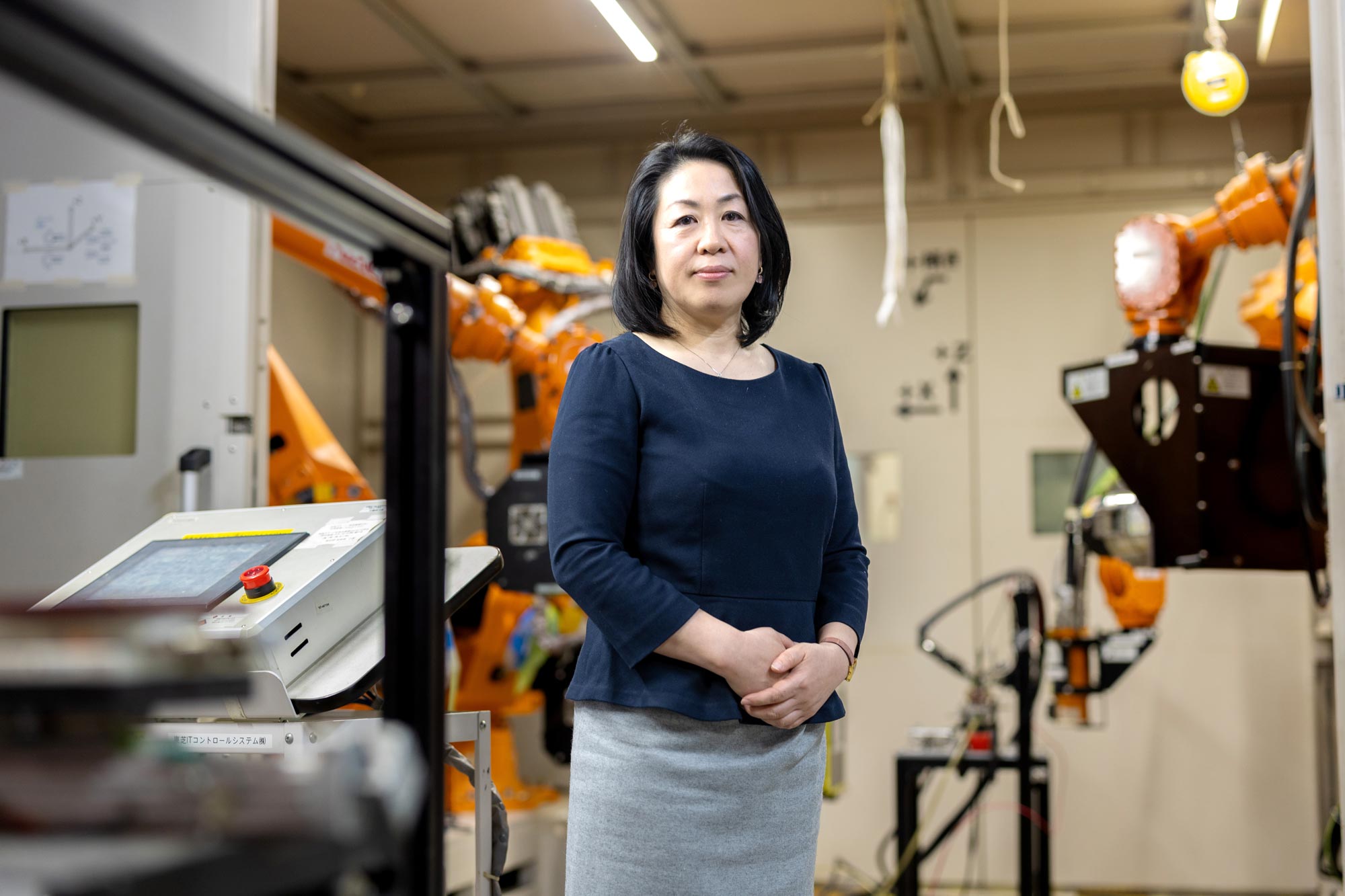
Professor Junko Umeda, Joining and Welding Research Institute
"Joining metal to metal and people to people"
Joining technology, as in welding, supports society from the bottom up by joining objects together to create various products and structures. Despite its ubiquitous nature, joining technology remains a complex and relatively unexplored research field. Dr. Umeda conducts her research at the Joining and Welding Research Institute (JWRI), one of the world's leading research institutes in the field of welding and joining science.
What is the scope of your research?
I am originally from a background in the humanities, coming to joinery research only by chance, but I have been working in the field of joining and welding and have been involved in manufacturing for about 20 years now. I have been developing materials that are composites of metals, specifically by using a technique to extract high-purity silica from rice husks and by adding alloying elements to pure titanium, which I’ll touch on here, to create high-strength and high-ductility materials.
Believe it or not, Japanese swords are made of a composite of hard and soft metals. In order to develop new composite materials, we are attempting to engineer them at the atomic and nano scale and change their crystal structures while also analyzing the properties of these materials.

Please tell us about your recent achievements.
We are analyzing the mechanical strength of titanium (Ti) material by adding various alloying elements to improve its mechanical strength for a wide range of applications. For instance, this means developing a material that is strong but can also be broken with a snap. The composite elements used are elements such as oxygen, nitrogen, iron, silicon, carbon, and hydrogen, all of which can be found in abundance and are harmless to the human body. In our recent work*1, we used Ti-(N) powder to fabricate PM (powder metallurgy) Ti composites with ring-shaped TiN dispersoids using optimal consolidation temperatures. The tribological properties of these Ti-TiN composites were then evaluated. Tribological properties are properties related to friction, which is the part we need to manipulate to create the basic structure of the composite material. From our experiments, we were able to confirm the properties of the developed composite material, i.e., its suppleness and strength, and the results showed that the tribological properties and wear resistance of the composite material had improved when compared to the pure Ti single material. If we can develop a material that is as strong as steel while at the same time remaining supple, we can further meet the demands of medical devices and aircraft parts.
Can you tell us about your experiences as the only female professor at JWRI?
Our institute is diverse, with many students from Asia, Oceania, the U.S., Europe, and other foreign countries. We are also very actively involved in international joint research and industrial collaboration. Although the number of female researchers has been increasing every year, I am the only female professor here, so in 2017, I created a group of female faculty, staff, and students to get together. We even decided on a name for the meeting together: the JWRI Girls Meeting. We meet several times a year and have talks with each other. I consider everyone here to be like a big sister or mother to the younger students. Even if we just see each other in the hallway, we can talk and be comfortable at the institute, which I think helps them to be more at ease.

What are your goals as a researcher?
I have not set any specific goals for myself. In my research, I will continue to find characteristics, make new discoveries, and create value, all with the aim of discovering new challenges and creating breakthroughs. I originally come from outside of my area of expertise, so I may not know more than other researchers, but I won’t hesitate to express when I don't know something and engage those around me so that we can push forward together. Ultimately, I hope to serve as a "junction" connecting people to people, including young researchers, while doing research at JWRI, where we connect things to things.
Reference:
1) Umeda, J., et al. Tribological Behavior of Titanium-Sintered Composites with Ring-Shaped TiN Dispersoids. Lubricants, 2022, 10, 254.
https://www.mdpi.com/2075-4442/10/10/254
For more information:
researchmap: https://researchmap.jp/umeda?lang=en
Laboratory website: http://www.jwri.osaka-u.ac.jp/~dpt6/index_en.html
Joining and Welding Research Institute Osaka University: http://www.jwri.osaka-u.ac.jp/en/index_e.jsp
Text: Mayumi Mochizuki/Edit: Christopher Bubb